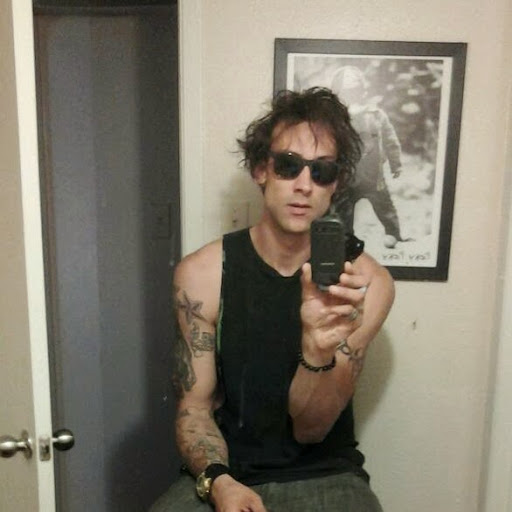Christopher T Monroe
age ~42
from Tipton, MI
- Also known as:
-
- Chris Monroe
Christopher Monroe Phones & Addresses
- Tipton, MI
- Tecumseh, MI
- Weidman, MI
- Lake, MI
Name / Title
Company / Classification
Phones & Addresses
CREATIVE JUBLE LLC
CHOICE-PROFESSIONAL OVERNIGHT COPY SERVICE OF ARKANSAS, INC
Us Patents
-
Ion Trap In A Semiconductor Chip
view source -
US Patent:7411187, Aug 12, 2008
-
Filed:May 23, 2006
-
Appl. No.:11/419955
-
Inventors:Christopher Monroe - Ann Arbor MI, US
Daniel Stick - Ann Arbor MI, US
Martin Madsen - Ann Arbor MI, US
Winfried Hensinger - Ann Arbor MI, US
Keith Schwab - Ithaca NY, US -
Assignee:The Regents of the University of Michigan - Ann Arbor MI
-
International Classification:B01D 59/44
-
US Classification:250290, 250281, 250282, 250283, 250288, 250214 R, 250207, 257 14, 257 12, 257 13, 257 15, 257 17, 257 31, 257 33, 703 11, 708403, 708191, 700 1, 706 14, 706 12, 706 45, 709201, 435 6, 4352872, 712 34
-
Abstract:A micrometer-scale ion trap, fabricated on a monolithic chip using semiconductor micro-electromechanical systems (MEMS) technology. A single 111Cd+ ion is confined, laser cooled, and the heating measured in an integrated radiofrequency trap etched from a doped gallium arsenide (GaAs) heterostructure. Single 111Cd+ qubit ions are confined in a radiofrequency linear ion trap on a semiconductor chip by applying a combination of static and oscillating electric potentials to integrated electrodes. The electrodes are lithographically patterned from a monolithic semiconductor substrate, eliminating the need for manual assembly and alignment of individual electrodes. The scaling of this structure to hundreds or thousands of electrodes is possible with existing semiconductor fabrication technology.
-
Long-Distance Quantum Communication And Scalable Quantum Computation
view source -
US Patent:7518120, Apr 14, 2009
-
Filed:Jan 3, 2006
-
Appl. No.:11/324366
-
Inventors:Christopher Monroe - Dexter MI, US
Boris Blinov - Seattle WA, US
David Moehring - Ann Arbor MI, US
Luming Duan - Ann Arbor MI, US -
Assignee:The Regents of the University of Michigan - Ann Arbor MI
-
International Classification:H04B 10/02
G06F 15/00 -
US Classification:250393, 250395, 398173, 398183, 712 1
-
Abstract:Methods and apparatus for long-distance quantum communication and scalable quantum computation are disclosed. The methods and apparatus are based on probabilistic ion-photon mapping. Scalable quantum computation is achieved by forming deterministic quantum gates between remotely located trapped ions by detecting spontaneously emitted photons, accompanied by local Coulomb interaction between neighboring ions. Long-distance quantum communication and scalable quantum communication networks formed by employing a number of remote nodes that each include an ion trap and by employing probabilistic photon-mediated entanglement between the ions in each ion trap.
Resumes

Christopher Monroe
view sourceSkills:
Airlines
Sports
San
Entertainment
Sports
San
Entertainment

Executive Producer
view sourceWork:
Executive Producer

Christopher Monroe
view source
Christopher Monroe
view source
Christopher Monroe
view source
Christopher D. Monroe
view source
Christopher Chip Monroe
view source
Christopher Blazin Monroe
view source
Christopher Monroe
view source
Christopher Monroe
view source
Christopher Monroe
view sourceNews

After years of avoidance, Department of Energy joins quest to develop quantum computers
view source- S. government already spends about $250 million per year on quantum computing, mostly through the Army Research Office, says Christopher Monroe, a physicist at the University of Maryland in College Park and co-founder of the quantum computing startup IonQ. But the DOE money will go mostly to its nat
- Date: Jan 10, 2018
- Category: Sci/Tech
- Source: Google

Quantum simulators wield control over more than 50 qubits, setting new record
view source- "Each ion qubit is a stable atomic clock that can be perfectly replicated," says UMD team lead Christopher Monroe, who is also the co-founder and chief scientist at the startup IonQ Inc. "They are effectively wired together with external laser beams. This means that the same device can be reprogramm
- Date: Nov 30, 2017
- Category: Science
- Source: Google

Two Incredible New Quantum Machines Have Made Actual Science Discoveries
view source- heyre very specific quantum simulators with very specific functions. These are esoteric problems that we have solved, said Christopher Monroe, physics professor at the University of Maryland. In our case we mapped out a phase diagram [how the properties of the system change based on the inputs]
- Date: Nov 29, 2017
- Category: Science
- Source: Google

Two New Simulators Tease Future of Quantum Computing
view source- Pioneering researchers such as Christopher Monroe (a co-author on the trapped ion paper) have helped create a great toolbox and understanding for controlling qubit arrays based on the trapped ion approach, according to Omran and his colleagues.They added that trapped ion arrays also enable resear
- Date: Nov 29, 2017
- Category: Science
- Source: Google

Quantum Computing Breakthrough: World's First Reprogrammable Device Created Using Trapped Ions
view source- For any computer to be useful, the user should not be required to know whats inside, co-author of the Nature article,Christopher Monroe, a fellow at JQI, said in a statement. Very few people care what their iPhone is actually doing at the physical level. Our experiment brings high-quality quant
- Date: Aug 04, 2016
- Category: Sci/Tech
- Source: Google

Programmable ions set the stage for general-purpose quantum computers
view source- In a paper published as the cover story in Nature on August 4, researchers working with Christopher Monroe, a Fellow of the Joint Quantum Institute and the Joint Center for Quantum Information and Computer Science at the University of Maryland, introduced the first fully programmable and reconfigura
- Date: Aug 03, 2016
- Category: Sci/Tech
- Source: Google

France's Haroche, Wineland of US win Nobel in physics for work on observing ...
view source- Christopher Monroe, who does similar work at the Joint Quantum Institute at the University of Maryland, said the awarding of the prize to the two men is not a big surprise to me ... It was sort of obvious that they were a package.
- Date: Oct 09, 2012
- Category: Sci/Tech
- Source: Google
Classmates

Christopher Monroe
view sourceSchools:
Pikesville Junior High School Baltimore MD 1998-2002
Community:
Paola Serrano, Lois Miller, Jacky Lavine, Robert Reznikov

Christopher Monroe
view sourceSchools:
Scottsburg High School Scottsburg IN 1994-1998
Community:
Marrel Smith, Mare Higgs, Craig Caudill

Christopher Monroe
view sourceSchools:
John Jay High School San Antonio TX 1999-2003

Christopher Monroe
view sourceSchools:
Mojave High School North Las Vegas NV 2002-2006
Community:
Patrick Breeden

Christopher Monroe
view sourceSchools:
Warrensburg High School Warrensburg NY 1980-1984
Community:
Mike Cameron, John Hastings, Susan Danise

Christopher Monroe
view sourceSchools:
Muncie Central High School Muncie IN 1990-1994

Christopher Monroe
view sourceSchools:
Mary E. Nicholson Elementary School 70 Indianapolis IN 1984-1988
Community:
Larry Gorske, Stephen Zimmerman, Andy Spradlin, Nancy Kirby

Christopher Christopher ...
view sourceSchools:
Pleasant Hill Elementary School Peoria IL 1975-1985
Community:
Holly Townsend, Tim Simpson, Dale Howard, Kim Turner, Edward Sell, Scott Wilson
Myspace
Youtube
Googleplus

Christopher Monroe
Work:
Wild models and talent - Model
Education:
East Los Angeles College - Theatre
Bragging Rights:
You can see me stunt on yo pc!

Christopher Monroe
Work:
United states air force - Electrician
Education:
McGavock Comprehensive High School

Christopher Monroe
Work:
Christopher Monroe

Christopher Monroe
Work:
ABB, inc. - Design Drafter

Christopher Monroe
Education:
Granite hills

Christopher Monroe
Tagline:
You better recafuthamukanize hand me the funnel and run along youngin

Christopher Monroe

Christopher Monroe
Flickr
Get Report for Christopher T Monroe from Tipton, MI, age ~42

















